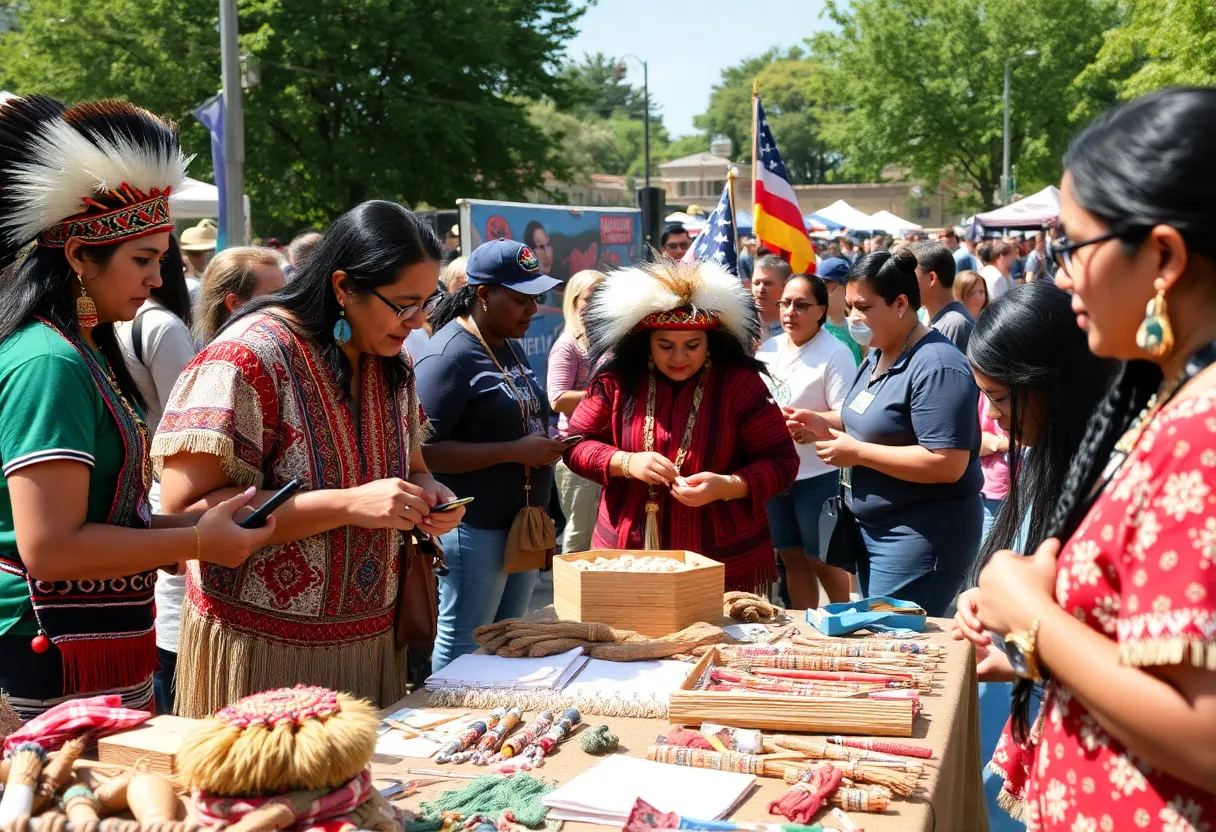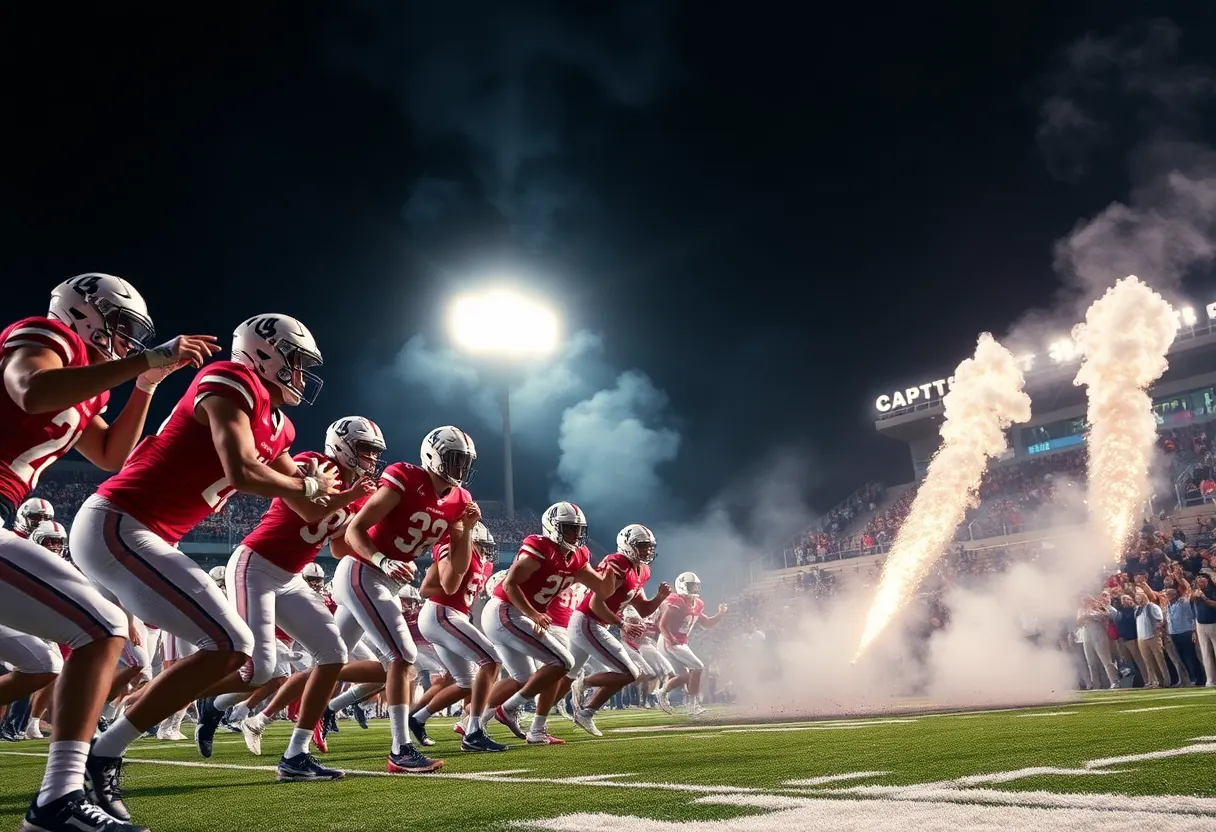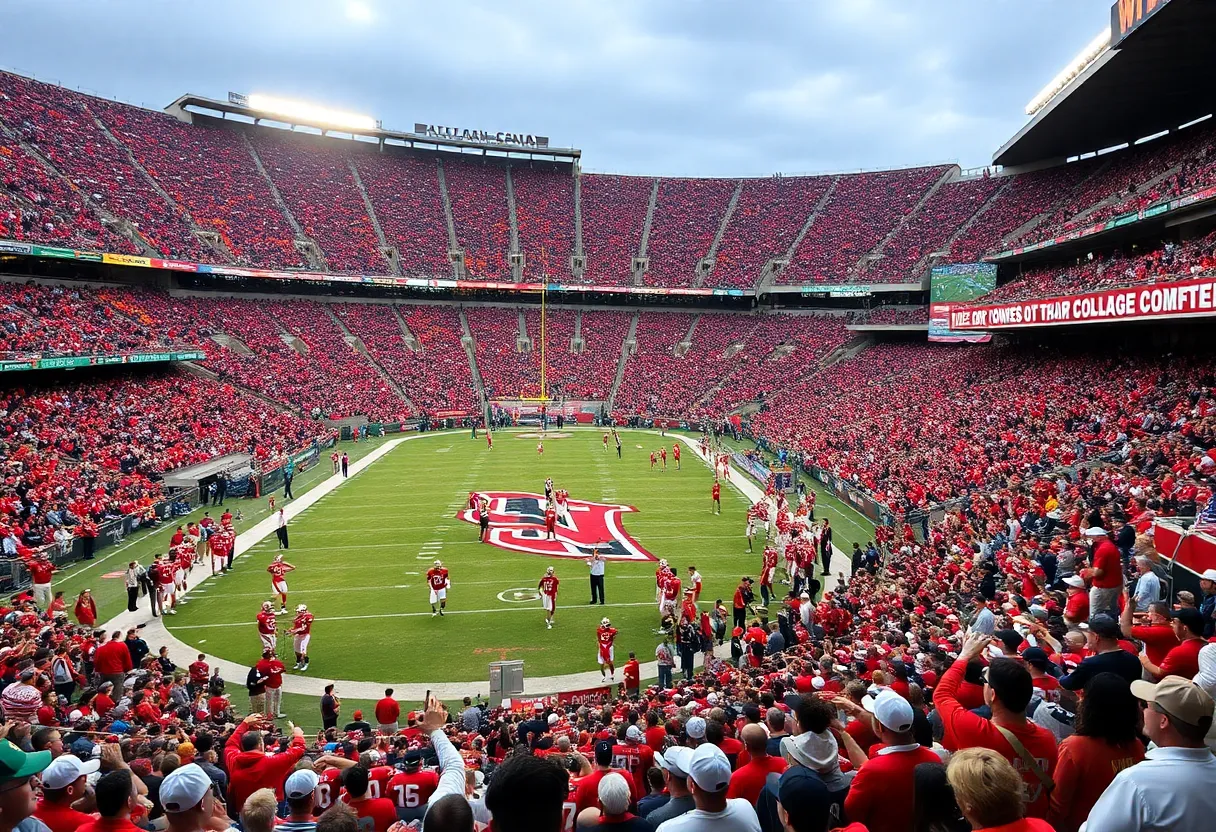Oklahoma City, October 13, 2025
Oklahoma City is celebrating Indigenous Peoples’ Day with a series of cultural events that showcase Native American heritage. Activities include storytelling sessions, workshops, and exhibits at local museums, emphasizing historical resilience and community aspirations. Highlights include the Oklahoma History Center’s tribal artifact exhibit, free workshops on crafts at the First Americans Museum, and the Red Earth Festival. Food stalls offering traditional dishes encourage cultural exchange, while children’s activities make participation accessible and educational for all ages.
Oklahoma City Celebrates Indigenous Peoples’ Day with Cultural Events
Oklahoma City is currently hosting a series of cultural events to honor Indigenous Peoples’ Day, featuring exhibits, workshops, and performances that highlight Native American heritage. These activities, taking place over the last 48 hours, include storytelling sessions, traditional craft demonstrations, and speeches focusing on historical resilience and future aspirations.
At the forefront of the celebrations, the Oklahoma History Center has opened exhibits showcasing tribal artifacts and hosting sessions where local elders share stories from Native American traditions. The First Americans Museum is offering free workshops on crafts like beading and dance demonstrations, drawing participants eager to engage with these cultural practices. In addition, the Red Earth Festival in Oklahoma City has attracted diverse crowds, contributing to a statewide total of over 10 events promoting indigenous culture across Oklahoma.
Key activities also involve speeches by tribal leaders that emphasize themes of historical resilience and community aspirations. Food stalls at various sites serve authentic dishes such as fry bread and bison meals, encouraging cultural exchange among attendees. For families, children’s activities include interactive games based on Native lore, making the events accessible and educational for all ages. Evening drum circles provide a fitting conclusion, fostering a sense of unity and reflection.
These events promote education and respect, serving as an alternative to Columbus Day in many calendars. Organizers have ensured accessibility with features like sign language interpreters, making participation inclusive. Attendance is free, which has encouraged widespread involvement from the community.
Building on this, the celebrations underscore Oklahoma’s rich indigenous heritage, with efforts to educate both newcomers and longstanding community members. The focus on interactive and cultural elements aims to preserve and share Native American traditions through direct engagement.
Supporting Details of the Events
The events at the Oklahoma History Center feature detailed exhibits of tribal artifacts, providing visitors with hands-on opportunities to learn about historical items. Storytelling sessions by local elders offer insights into oral traditions, helping to pass down knowledge to younger generations.
At the First Americans Museum, workshops on traditional crafts such as beading allow participants to create their own pieces, while dance demonstrations showcase ceremonial movements. These activities are designed to be interactive, enabling attendees to actively participate rather than just observe.
The Red Earth Festival, a highlight in Oklahoma City, includes a variety of elements like the food stalls offering fry bread and bison dishes, which represent traditional Native American cuisine. This setup not only provides a taste of cultural foods but also facilitates discussions and exchanges among diverse groups.
Children’s activities, such as games rooted in Native lore, are tailored to be fun and educational, helping to introduce younger audiences to indigenous stories and values. The evening drum circles serve as a communal gathering, with rhythmic performances that cap off the day’s events.
Background Context
Indigenous Peoples’ Day has gained recognition as an observance that honors Native American history and contributions, often replacing Columbus Day in various regions. In Oklahoma, with its deep ties to indigenous communities, these events highlight the state’s rich tapestry of Native heritage. The celebrations emphasize themes of education, respect, and cultural preservation, reflecting a broader movement to acknowledge and celebrate indigenous resilience.
Organizers across Oklahoma have coordinated over 10 events statewide, with Oklahoma City’s offerings playing a central role. This approach not only fosters local participation but also connects with state-level efforts to promote awareness. By focusing on free access and inclusive features, the events aim to build bridges between communities and ensure that indigenous stories are shared widely.
Overall, these gatherings provide an opportunity for attendees to learn about and appreciate Native American culture, reinforcing the importance of such observances in contemporary society. With elements like exhibits, workshops, and performances, the events create a comprehensive experience that educates and engages participants of all backgrounds.
To expand on the events, it’s noted that similar cultural activities have been occurring across Oklahoma, as part of broader state-level initiatives. For instance, information from recent updates indicates ongoing celebrations that align with this theme, contributing to a larger context of honoring indigenous cultures.
The structure of these events, from educational sessions to festive gatherings, demonstrates a commitment to cultural exchange. This helps in maintaining traditions while adapting them for modern audiences, ensuring that indigenous heritage remains vibrant and relevant.
Continued participation in such events supports ongoing efforts to preserve Native American history, making Oklahoma City a key hub for these activities in the state.
As part of the celebrations, the events have included practical elements like guided tours and interactive displays, which provide deeper insights into tribal histories. For example, visitors can explore artifacts that represent centuries of indigenous craftsmanship, offering a tangible connection to the past. These details help illustrate the daily lives and achievements of Native American communities, making the events not just entertaining but also informative.
Furthermore, the availability of free workshops encourages hands-on learning, where individuals can learn skills passed down through generations. This aspect is crucial for cultural preservation, as it allows for the transmission of knowledge in an engaging manner. The overall atmosphere of the events promotes a sense of community, with attendees from various walks of life coming together to share in the experience.
In light of Oklahoma’s historical significance in indigenous affairs, these events serve as a reminder of the state’s role in Native American history. By hosting such gatherings, Oklahoma City contributes to a state-level movement that values and respects indigenous contributions.
With the inclusion of family-oriented activities, the events ensure that younger generations are involved, fostering a lasting appreciation for indigenous cultures. This holistic approach makes the celebrations a comprehensive tribute to Indigenous Peoples’ Day.
The success of these events, drawing crowds and positive feedback, underscores their importance in promoting cultural understanding. As the day progresses, more people are expected to join, continuing the spirit of celebration and education.
FAQ Section
Frequently Asked Questions
- What events are happening in Oklahoma City for Indigenous Peoples’ Day?
- Events include exhibits at the Oklahoma History Center featuring tribal artifacts and storytelling sessions, free workshops at the First Americans Museum on traditional crafts like beading and dance demonstrations, and the Red Earth Festival drawing diverse crowds.
- How many events are there across Oklahoma?
- Organizers highlight over 10 statewide events, with Oklahoma City’s Red Earth Festival being a key part.
- What activities are available for children?
- Children’s activities include interactive games rooted in Native lore.
- Is attendance free?
- Attendance is free, encouraging widespread participation.
- What does Indigenous Peoples’ Day promote?
- This observance promotes education and respect, replacing Columbus Day in many calendars.
Key Features Chart
| Feature | Description |
|---|---|
| Exhibits and Storytelling | At Oklahoma History Center: Tribal artifacts and sessions by local elders |
| Workshops and Demonstrations | At First Americans Museum: Free sessions on beading and dance |
| Festival Highlights | Red Earth Festival: Draws diverse crowds with cultural activities |
| Food and Cultural Exchange | Authentic dishes like fry bread and bison, fostering community interaction |
| Children’s Activities | Interactive games based on Native lore for family engagement |
| Evening Events | Drum circles to conclude the day’s festivities |
| Accessibility | Features like sign language interpreters for inclusive participation |
| Statewide Scope | Over 10 events across Oklahoma, emphasizing state-level celebration |
Deeper Dive: News & Info About This Topic
HERE Resources
Oklahoma City Financial Institutions Adapt Growth Strategies
Gunfire Near School Bus in Oklahoma City Prompts Police Action
Beacon Hill Financial Launches New Branch in Oklahoma City
TD Bank Branch Closures Nationwide Leave Oklahoma City Operations Intact
Oklahoma City Regional Banks Drive Growth with Digital and Community Strategies
Oklahoma City Businesses Adjust for Columbus Day and Indigenous Peoples’ Day





